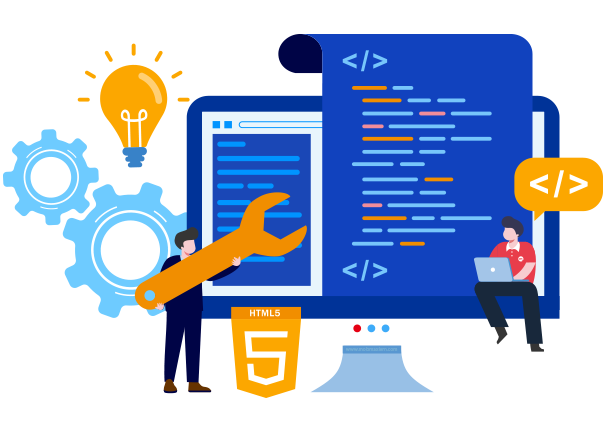Rise by Six: Your Daily Dose of Inspiration
Explore insights and stories that elevate your day.
HTML5 Development: Crafting the Web Like a Chef with a Digital Recipe
Master HTML5 like a pro chef! Unleash your creativity with our digital recipe for stunning web development. Start crafting today!
Understanding HTML5: The Essential Ingredients for Modern Web Development
HTML5 has revolutionized modern web development by introducing a plethora of new features and elements that enhance the way developers create content. This latest version of the HyperText Markup Language not only supports multimedia elements like audio and video without the need for external plugins but also emphasizes better semantics. For instance, tags such as <header>, <footer>, <article>, and <section> promote a clearer content structure, making it easier for both developers and search engines to understand the webpage layout. Additionally, new APIs, such as the Canvas API and Geolocation API, empower web applications with interactive functionalities that were previously unattainable with older versions of HTML.
Moreover, one of the essential ingredients of HTML5 is its focus on improved user experience and accessibility. The introduction of features like placeholder attributes and native form controls significantly enhances form handling, resulting in cleaner code and a seamless user interface. Furthermore, with the incorporation of responsive design techniques, HTML5 allows developers to build websites that look and function beautifully across various devices and screen sizes. This adaptability not only boosts user satisfaction but also contributes positively to SEO efforts by improving page load times and overall site performance, leading to better search engine rankings.

Mastering HTML5: Step-by-Step Tips to Cook Up Your Next Web Project
In today's digital landscape, mastering HTML5 is essential for any aspiring web developer or designer. This powerful markup language not only enhances the structure of your web pages but also allows for richer multimedia experiences and improved SEO performance. To get started on your journey, follow these step-by-step tips:
- Understand the Basics: Familiarize yourself with HTML5 syntax, elements, and attributes.
- Explore New Features: Take advantage of new elements like
<section>,<article>, and<video>to create more semantic and engaging content. - Practice Accessibility: Ensure that your web applications are accessible for all users by using
altattributes for images andarialabels as needed.
Once you're comfortable with the fundamentals, start integrating HTML5 into your web projects. This can involve utilizing local storage for offline capabilities, developing responsive designs with <canvas>, or implementing complex web applications using the Geolocation API. Remember, a well-structured project is vital for both user experience and SEO. As you implement these features, keep these best practices in mind:
- Validate Your Code: Use online validation tools to ensure your HTML5 code is error-free.
- Optimize for Performance: Minimize load times by compressing images and scripts.
- Stay Updated: Follow the latest trends and updates in web development to keep your skills sharp.
How Does HTML5 Enhance User Experience? A Recipe for Success
HTML5 significantly enhances user experience by providing a more engaging and interactive web environment. By introducing new features like semantic elements, developers can create more meaningful and accessible web pages. For instance, the use of tags such as <article>, <section>, and <footer> allows search engines to better understand the content's structure, improving SEO rankings. Additionally, HTML5 supports multimedia elements natively, meaning users can enjoy videos and audio without relying on external plugins, creating a smoother and more cohesive user journey.
Furthermore, HTML5 offers enhanced form features that simplify user input and make the experience more intuitive. Features such as input types for email, date, and URL enhance validation and ensure users submit correct information. Custom validation messages and built-in placeholders make forms more user-friendly. As a result, websites leveraging HTML5 not only boost user satisfaction but also drive higher conversion rates, turning casual visitors into loyal customers—a true recipe for success in today’s competitive online landscape.